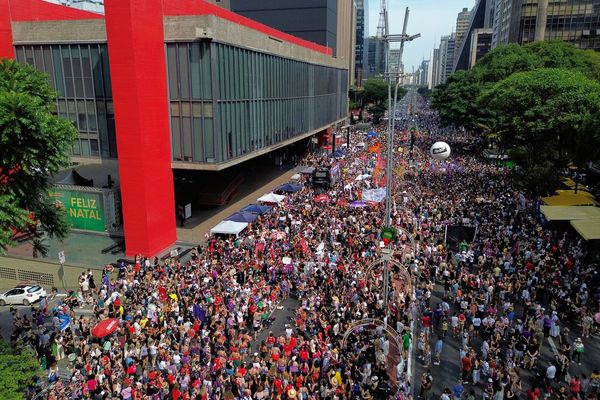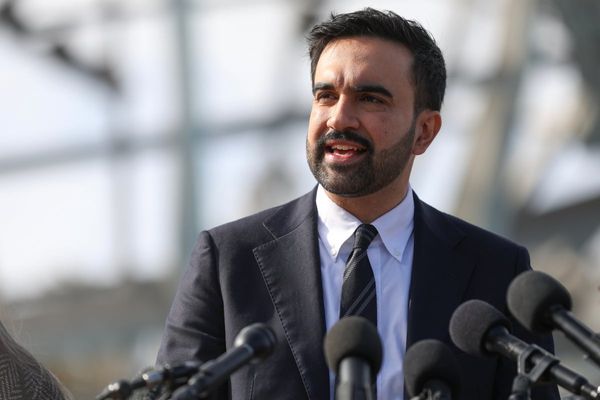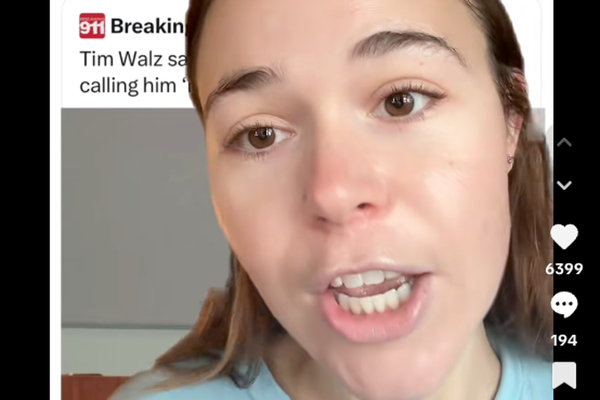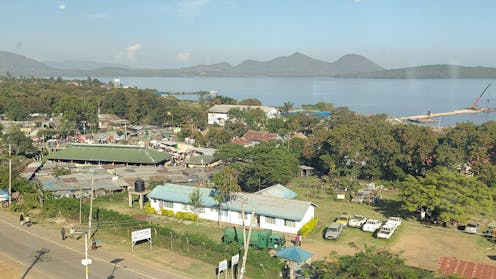
My phone wouldn’t stop ringing – nurses, social workers, young mothers – all begging for help. ‘I’ve lost my job,’ ‘I have no food,’ ‘What do we do now?’ I felt helpless.
These are the words of Rogers Omollo, founder and CEO of Activate Action – a youth-led non-profit organisation that supports young people with HIV and disabilities in Homa Bay, a town in west Kenya on the shores of Lake Victoria.
As specialists in youth and sexual and reproductive health, we were on a field trip to learn from Omollo and others like him. We wanted to find out about the work they were doing to tackle HIV, stigma and health inequalities.
But our time there was dominated by one thing: President Donald Trump’s executive order which put almost all international spending by the United States Agency for International Development (USAID) on pause for a 90-day review and subsequently took a wrecking ball to all international aid programmes funded by the US.
In July, research published in The Lancet medical journal found that the US funding cuts towards foreign humanitarian aid could cause more than 14 million additional deaths by 2030, with a third of those at risk of premature deaths being children. Davide Rasella, who co-authored the report, said low- and middle-income countries were facing a shock “comparable in scale to a global pandemic or a major armed conflict”.
In the immediate aftermath, we saw firsthand the profound impact the “pause” had in this community. Activate Action is not directly funded by USAID, but as we followed in the footsteps of our host, Omollo, meeting the organisation’s collaborators and beneficiaries, the true extent of the funding freeze became shockingly apparent.
Places like Homa Bay relied heavily on USAID funding to keep hospitals and clinics running, to ensure access to essential medicines, and to support reproductive health and HIV programmes. The executive order, in principle, resulted in the immediate halting of over US$68 billion (£51 billion) in foreign aid, a substantial portion of which supports lifesaving reproductive health and HIV programmes worldwide.
The Insights section is committed to high-quality longform journalism. Our editors work with academics from many different backgrounds who are tackling a wide range of societal and scientific challenges.
As we walked through abandoned offices and healthcare facilities speaking to bewildered people out of work and in need of critical services in February 2025, the chilling reality set in. Omollo reflected:
People who have spent years saving lives are now struggling to survive. The clinics are empty, the hope in their voices fading. It broke my heart. I wanted to scream, to fix it, but the truth hit hard – we can’t depend on one lifeline. If funding stops, lives should not. We must build something stronger, something that lasts.
Research shows that global financial strain can foster a conservative political climate. For example, the global financial crisis of 2008 has been associated with the rise of right-wing populism.
The current populist political climate is demonstrably hostile towards matters like reproductive health and rights. There are reports that reproductive rights are “backsliding” globally. For example, in the US abortion services have been increasingly restricted. In countries like Kenya, this is compounded by the longstanding global tendency towards anti-African or anti-black sentiment reflected in the foregrounding of stories that primarily depict Africa as a problem or a failure.
So, before we even set off on our research trip to unite sexual and reproductive health advocates and collaborate with African partners, we knew we were swimming against this tide.
Final figures remain unclear but in early 2025, the abrupt suspension of an estimated US$500 million of funding to Kenya was suggested by Amnesty International to have led to the layoff of 54,000 community health workers – many of whom had been part of robust, locally led responses to HIV, tuberculosis and malaria.
The decision to do this was driven by US audit and efficiency “reevaluations” over 8,000 miles away in Washington. Decisions were made and implemented by small numbers of people within the Trump administration including Elon Musk, whose estimated individual wealth far exceeds the gross domestic product of many entire east African nations, including Kenya.
Despite years of progress in community-based healthcare systems managed by Kenyans just like Activate Action, these cuts by one external donor disrupted critical services overnight. This also demonstrated that African health systems, no matter how effective, remain subject to profound external control.
Our project was funded in October 2024, before Trump’s re-election. One week of activities in the UK, one week in Kenya. By the time Activate Action visited Lancaster, in the north of England, in January 2025, we had already started to raise eyebrows as our colleagues began receiving communications from USAID-funded initiatives about pausing projects. Two weeks later, by the time we gathered in Kenya, the immediate human cost was clear to see.
‘The field has been eviscerated’
We sat at the back of a meeting observing training for an Activate Action initiative that would see community health champions offer peer support for their neighbours on safer sex and HIV prevention. In a building that was usually busy and populated by USAID-funded staff, the lights remained on in only one room.
Before visiting Homa Bay, we knew of its reputation when it came to the so-called triple threat of gender-based violence, HIV infection and teenage pregnancy rates – all of which disproportionately affects this semi-rural county in west Kenya.
As we watched the training, a colleague based in Europe (who was instrumental in connecting some of the members of our group) texted after learning we were in Kenya, saying:
It’s terrifying. Document it. No one gets it. The field has been eviscerated.
So, what did this evisceration look like?
Staff directly affected by the order were either not permitted to talk about what was happening on the record or didn’t feel safe doing so. We spoke to at least five people who told us directly they couldn’t “speak out” and were nervous about us taking any photographs.
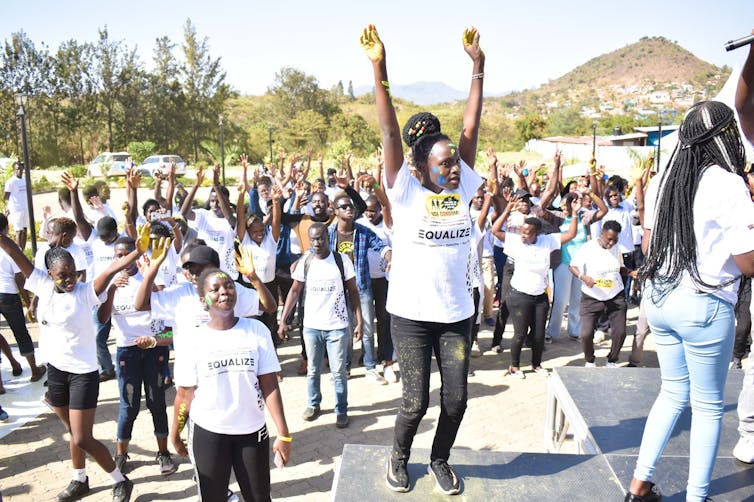
We saw how scores of people were served their notice to cease projects, backdated and effective immediately – a stop work order, followed by (for reasons with cloudy legal foundations) official terminations to contracts. Their economic and professional futures left hanging in the balance.
As we navigated workshops and meetings, Omollo (now unexpectedly advantaged through Activate Action not being USAID-funded) continued to receive multiple texts, calls and emails from people seeking work.
A researcher we know working on a USAID supported HIV and maternity care project described doing frantic overtime in the face of uncertainty. She needed to put in hours of extra (unpaid) work to communicate with research participants as it would not be ethical to abruptly disappear on people currently engaged in an active research programme.
She had no way to manage expectations with those she spoke to and no way of knowing if they were saying a final “thank you and goodbye” to the people she had been working with for months. Despite the descriptions of USAID project funds being “paused”, she was quickly served a full termination of employment notice.
In east Africa, where this sudden and mass unemployment of vital technical and administrative staff is happening, more than half of young people aged 15-35 are unemployed. The rate is even higher among young women in rural areas (up to 66%.)
A greater horror unfolds when you consider who these unemployed workers are usually paid to help because they serve communities with some of the highest needs related to HIV, teenage pregnancy and gender-based violence.
The youth health facility we visited, for example, was locked up when we arrived. We sat in stunned silence in an empty three-roomed building with a youth HIV counsellor. We were shown photographs that showed how it was once a vibrant and busy place.
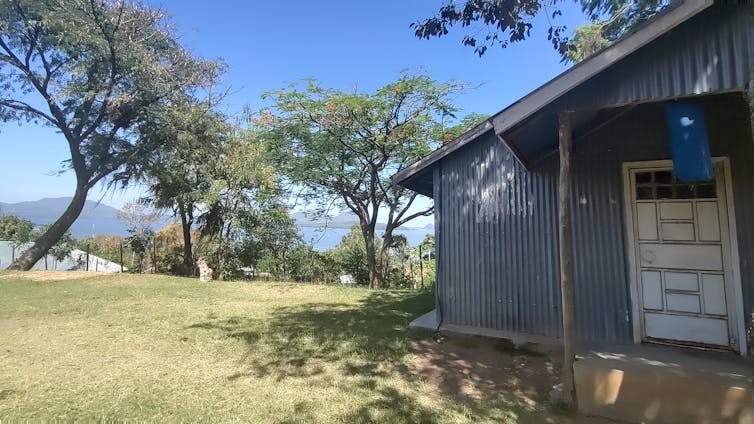
Here, the free services and information on HIV, contraception and mental health was being delivered by skilled and non-judgmental youth specialists. But it was closed down from January 20, 2025 and its future remains uncertain. A free condom dispenser outside lay empty, all supplies given out on closure day in a last ditch attempt to help young people remain safe over the coming weeks.
In Homa Bay, huge achievements have been made in addressing teenage pregnancy and adolescent HIV infection in recent years. There has been a remarkable decline in prevalence rates, new infections, and HIV-related deaths, aided by robust treatment programmes that contribute to better health. People have been living with HIV at undetectable levels, therefore unable to transmit infection. But this “safe” status requires ongoing treatment with antiretroviral medication.
What now in the absence of USAID?
But at the time of our visit, the delivery of antiretroviral therapy was becoming more restricted and would require collection by the user every three weeks, rather than the usual three months, therefore lasting the user a shorter time. To service providers we spoke to, this increase in the frequency of collection of medication was known to be a significant barrier for people having to travel long distances more frequently without transport to get their supply replenished.
Omollo explained to us that Homa Bay is also a medication hub, of sorts. People come here from other communities where, due to stigma, the risks of being identified as someone who is HIV positive in their own communities are much higher.
Successes notwithstanding, Homa Bay county’s teenage pregnancy rate is over 20% and HIV prevalence is some of the highest in Kenya (15.2% overall in Homa Bay, higher than the national average of 3.7%), with 75% of new HIV infections across the country affecting young people aged under 34. There are almost as many people living with HIV in Homa Bay county as there are in the whole of the UK and many are children. In other words, the demand for accessible and sustained services is high and the impact of their absence is huge.
Every conversation we had yielded new information about the reality. Gender-based violence projects were also suspended, in part because of the Trump administration’s intentions to end “gender ideology”. A service provider joked despondently during a presentation how: “I got sacked for saying gender.”
In Kenya, femicide (the murder of women or girls because of their gender) has been described as a “crisis” requiring urgent action. In Homa Bay specifically, the sexual and gender-based violence statistics are higher than national averages and have been on the rise, especially among young people.
This follows alarming countrywide coverage about femicide across Kenya including high profile and horrifying cases such as that of the Ugandan athlete Rebecca Cheptegei.. Official figures are unclear but there are currently widespread protests and calls to action related to this injustice.
Activate Action had recently won one USAID award focusing on men living with HIV and substance use problems (factors that are both implicated in gender-based violence). Since the USAID funding freeze this offer has instantly been dissolved with no expectation of reinstatement.
Meanwhile, the fight against cervical cancer – the leading cause of cancer death in Kenya – has also been hit. Human papilloma virus (HPV) vaccination campaigns across the county have stalled, despite the fact the vaccines help prevent cervical cancer.
At one point, a 23-year-old mother of three small children asked us directly if we found it troubling (as she did) that she will not be able to receive maternal healthcare and her contraception. The list of effects is grim and feels endless.
Collateral damage
When our group convened for a workshop at a community venue with sexual and reproductive health and rights staff from across the area, the chatter was similarly focused on the effects of the USAID funding freeze, but this time in the direct shadow of operations.
Next door, four-wheel drive Jeeps had been recalled and locked behind USAID premises gates, gathering dust instead of being out in the field delivering HIV outreach services. They represented the stasis of operations more widely.
Dr Peter Ibembe, from a party of service providers visiting from Uganda, was formerly a Programme Director for the non-governmental organisation Reproductive Health Uganda where he was in charge of service delivery. He spoke to us about the atmosphere:
An eerie tone of quiet has descended on the place. Many have been suddenly rendered jobless; creating mental stress, depression, anxiety. But there has also been an indirect effect on the wider community through the entire value chain: landlords, banks and other credit institutions; food vendors; gas stations; transportation facilities and companies; hotels, restaurants and lodges; schools hospitals and the like.
Everyone has been left in limbo. Kenya, despite gradual improvements, is a lower middle income country. Poverty identified by the World Bank as a key development challenge for the nation with, in 2022, over 20 million Kenyans identified as living below the poverty line. So these knock-on effects can be drastic.
At an organisational level we also saw clearly how the boundaries of any one project running within any organisation cannot be neatly drawn, nor can projects be plucked from this matrix discretely in the way we might imagine when we hear how “USAID projects” have been suspended. This way of thinking profoundly undermines the reality of what these cuts mean because many projects are interdependent and interrelated. Omollo added:
Whilst Activate Action was not directly funded by USAID, the overall reduction in health services affects the community they serve. The lack of support for HIV prevention, mental health and economic empowerment programmes placed additional strain on grassroots organisations like us … which have had to fill gaps with limited resources.
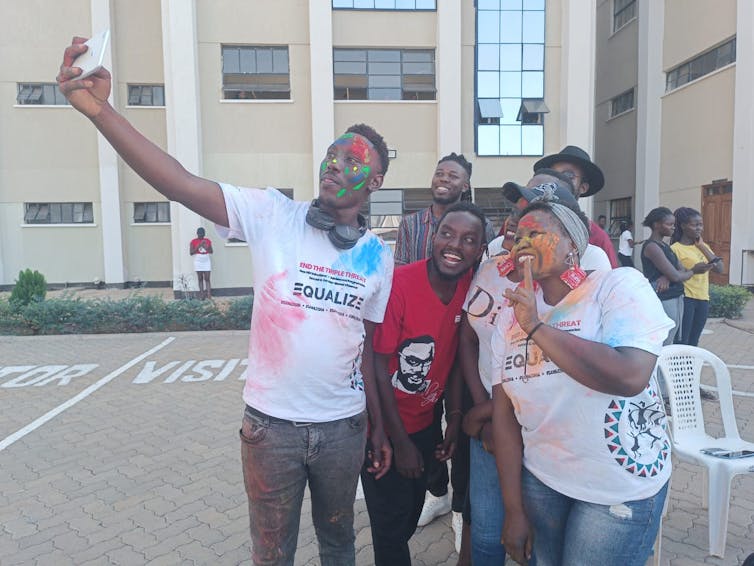
Services the world over, especially community based services, usually operate with multiple funding streams each providing different projects. Naturally the people, resources and activities overlap. To stress, this is not evidence of the “corruption” the Trump administration claims it wants to weed out, but it is the reality of how services reliant on external funding work.
It is usual that a patchwork of project grants function together to keep the doors open and the lights on. In fact, the sharing of operational resource is what bolsters an organisation’s capacity to serve its communities most effectively.
Considering “USAID projects” as single discretely bounded entities belie the messy complexity of how community and healthcare services work.
For another example of this kind of inter-connection, look no further than “table banking”. Table banking has been described as a “microcredit movement by women and for women” – effectively a DIY bank. We saw table banking used at Activate Action’s Street Business School, an initiative that tackles HIV through training women and building economic sustainability so they do not become trapped in poverty which may force them into have transactional sex. From a seated circle under trees, we watched as the collective pay in and take out loans to support their businesses from a central informal “bank account”.
Beneficiaries from this project continue to come together every Thursday, pooling finances and taking loans to sustain their business needs for the coming week (for example, buying stock for their market stalls). They told us how they are planning to collaborate on a catering business which will mean the older, sicker members of the group remain able to work and earn.
Similarly, Omollo told us how “a bit like table banking”, among his friends and colleagues, they also pool finance on a weekly basis to tick off items on a collective shopping list. He said: “One week we buy for one person, the next week, the next person and so on, until we all have a microwave.”
These demonstrations of microfinance arguably present, however idealistic, inspiration for a more financially sustainable future whereby its principles offer a “light of hope” at grassroots level, possibilities for nations in meeting sustainable development goals and, crucially in this context, freedom from dependency on external donors.
Social dictators of health
When we planned this exchange project, we wanted to work with Activate Action because of our shared interests.
Its explicit focus on the “social determinants of health” (the non-medical factors that affect health) is a refreshing departure from so many health programmes that seek to intervene on a person’s behaviour without attending to how it may be shaped by the wider social system.
For example, in the case of Homa Bay, Activate Action works to address root causes, such as poverty. Poverty means that transactional sex (which could be sex for food or period products) is common. Unsafe sex can be a hallmark of these sexual encounters, increasing HIV risk and transmission. Helping women build businesses, earn their own money to buy food and make their own period pads, reduces the need to trade sex for necessities.
As we sat discussing the various ways the cancelling of USAID would have devastating effects on different programmes and so the lives of different people, we realised how myriad social determinants – such as income, unemployment and healthcare services – are overwhelmingly contingent on distant regimes. Regimes run by people who seem to demonstrate little regard for the lives of disadvantaged and minoritised people.
No period of consultation, no management of expectations – a profound example of how bigger systems that govern our social lives can, in fact, dictate the outcomes of our health.
Antiretroviral drugs for HIV literally keep people alive and prevent transmission to others. Efforts to critique the USAID freeze by the inspector general of USAID, Paul Martin, saw him sacked. Again, no reason was given, and the White House did not have any comment.
When we were trying to explore whether termination notices for staff in Kenya were even legal, one media report about a judicial effort to halt the USAID stop work order noted that Trump has a “high threshold for legal risk”. An insight into what type of threats we may need to consider when trying to understand risks to and protections for health in the future.
Dr Ibembe, who provided closing remarks to our workshop, highlighted how “the effect of USAID cuts on the east African development landscape has been nothing short of seismic. It has created an environment of uncertainty, fear and stress. In some instances, up to 80% of health-related initiatives are donor supported. The funding and operational gap created is almost insurmountable.”
This reliance on external financial support and limited domestic financing in Kenya and other sub-Saharan African countries is common. This makes a nation vulnerable. Kenya also experiences substantial “donor dependency” especially across the health system which makes it harder to absorb the shock of a donor pulling funds.
In other words, this is a highly precarious system that is going through a shock which it will find incredibly difficult to withstand.
The situation is a stark reminder of just how unfair the power dynamics are that dictate African health governance and sovereignty.
Conversations about reducing the dependence of countries like Kenya on external donors have been going on for a long time. Throughout it has been acknowledged that any transition away from donor dependence needs to be carefully managed to avoid upsetting all the gains that have been made through initiatives like those funded by USAID. This has been completely impossible given the pace of change since January 2025 when the USAID stop work order came into play.
African solutions to African problems
The question now is not merely how African institutions will survive these disruptions but how they will leverage them as an impetus for change. Discussions about donor dependency arguably contribute to the framing of African states and institutions that are economically vulnerable and a “risk”. This in turn creates a negative bias that has recently been identified as costing African nations billions in lost or missed investment opportunities.
While financial constraints are a reality, the dominance of stereotypes also means we may overlook the effective strategic responses and resilience demonstrated by African organisations over the years. The challenge is not simply to reduce donor reliance but to reposition African institutions as key architects of health solutions through approaches that emphasise ownership, sustainability and regional integration.
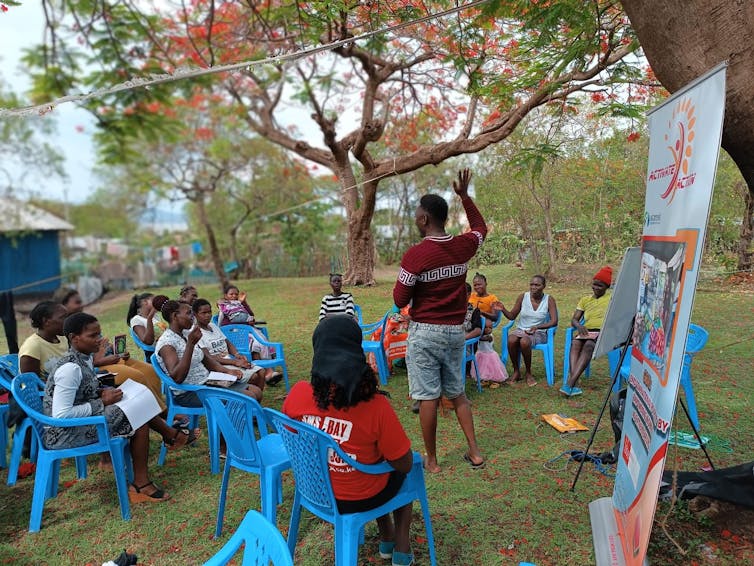
The Afya na Haki (Ahaki) institute provides a clear example of this shift towards what they refer to as “Africentric” models of health governance. The aim is to build African solutions to African problems.
This approach is anchored on four key pillars: amplifying positive African narratives; strengthening engagement with African regional institutions; supporting and fostering collaboration among African non-governmental organisations (NGOs) and other organisations; and bringing together African experts and communities to create knowledge that reflects local realities and needs.
Yet, restrictive policies that pre-date the USAID cuts such as the global gag rule which means NGOs are prohibited from receiving any US government funding if they provide, advocate for, or even refer to abortion services, have significantly disrupted this work, forcing institutions to rethink their operational strategies. An Ahaki staff member told us how their core focus on empowering Africans has been “thrown into disarray”.
Research that puts African stories and priorities front and centre is crucial – not just for shaping policies but for shifting the focus from dependence on external aid to African-led solutions and self-determination.
‘Hope hasn’t disappeared’
Within days of the USAID executive order on January 20, the USAID website was unreachable and our colleagues in Homa Bay sat reeling. By February 14, just after our visit, it was confirmed that a federal judge had successfully blocked the funding suspensions, although the relevance of this for people and projects like those we met in Homa Bay, whose contracts had already been terminated, was limited.
This executive order is one of many that has triggered global shockwaves. But for every action there is a reaction and we have also witnessed international resistance, from protests of USAID and nonprofit workers in Washington, to 500 Kenyan community workers demanding their unpaid salaries.
Musk’s company Tesla has been subject to widespread boycott and coordinated protest by “Tesla Takedown” in over 250 cities around the world. Canada has also made strides to reject American imports and strengthen its domestic markets, building greater independence from the USA, echoing desires of many African nations in relation to US donor dependence.
Musk suggested that USAID needs “to die” due to widespread corruption – an assertion that remains unsubstantiated. However, the violence and damage of this sentiment is being realised. As the sites we visited remain eerie and empty, gathering dust, our immediate concern is for the people and communities that agencies once funded by USAID represent and serve.
Omollo, and others like him, are now finding new ways to navigate these problems. The ripple effects of the USAID funding freeze have hit hard, programs have stalled, uncertainty has grown and communities are feeling the strain.
“But in the cracks, we’ve found ways to adapt,” he said. “At Activate Action, we’ve leaned on local partnerships, stretched every resource, and kept showing up for young people. Hope hasn’t disappeared; it’s just become something we fight for daily.”
For you: more from our Insights series:
To hear about new Insights articles, join the hundreds of thousands of people who value The Conversation’s evidence-based news. Subscribe to our newsletter.
We would like to acknowledge the specific contribution of Rogers Omollo from Activate Action in developing this article.
Christopher Baguma works with Afya na Haki as a Director of Programmes.
This article was originally published on The Conversation. Read the original article.

